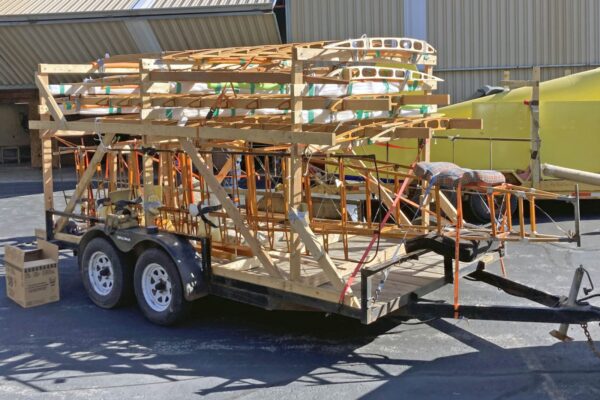
Sopwith 1½ Strutter
- : United Kingdom
- : 1916
- : Clerget & Le Rhone rotaries
- 110 - 145
- 33 ' 6"
- 100 mph (160 km/hr)
- 2149 lbs (975 kg)
- : Under Restoration
- : Reproduction
The versatile Sopwith “Two-Seater” appeared at the front in the Spring of 1916. This dull name was quickly discarded for “1 ½ Strutter” recognizing its long and short cabane struts forming an unusual twin “W” shape supporting the upper wing.
The Strutter was built in two configurations: as a two-seat, fighter/reconnaissance machine and as a single-seat light bomber.
And it was one the earliest British designs to offer armament for both the pilot and observer.
By all accounts, the Strutter was a well-balanced machine and delightful to fly. A variable incidence tailplane allowed the pilot to trim the machine in flight and rudimentary “air brakes” built into the lower wings helped to shorten rollout on landing. Fuel capacity allowed for successful, long-range reconnaissance or bombing missions. As a fighter, the Stutter was modestly successful until the Fall of 1916 when the new Albatros fighters appeared and quickly outclassed them. Despite their growing obsolescence, the Strutters were widely employed in front line work by many of the Allied air services through the early summer of 1918.
The Sopwith 1 ½ Strutter also served in England with Home Defense units and saw service with the RNAS in shipboard landing and takeoff trials. Eventually, all of the Strutters were relegated to training roles where they efficiently helped to prepare both pilots and observers for their roles at the front in the new class of fighter/reconnaissance aircraft. Approximately, 1500 Strutters were built by eight British contractors including Sopwith. In France, some 4500 were built (in four configurations) by four contractors. Many Strutters soldiered on in training roles with allied forces well into 1920.
Our Strutter, a generous donation from the estate of James F. Ross, arrived in the Spring of 2021. Ross, a talented woodworker, had nearly completed the wings and tail surfaces. The fuselage is almost 50% complete. It was built using original construction and is awaiting completion.
Click for more information about the Sopwith 1½ Strutter
